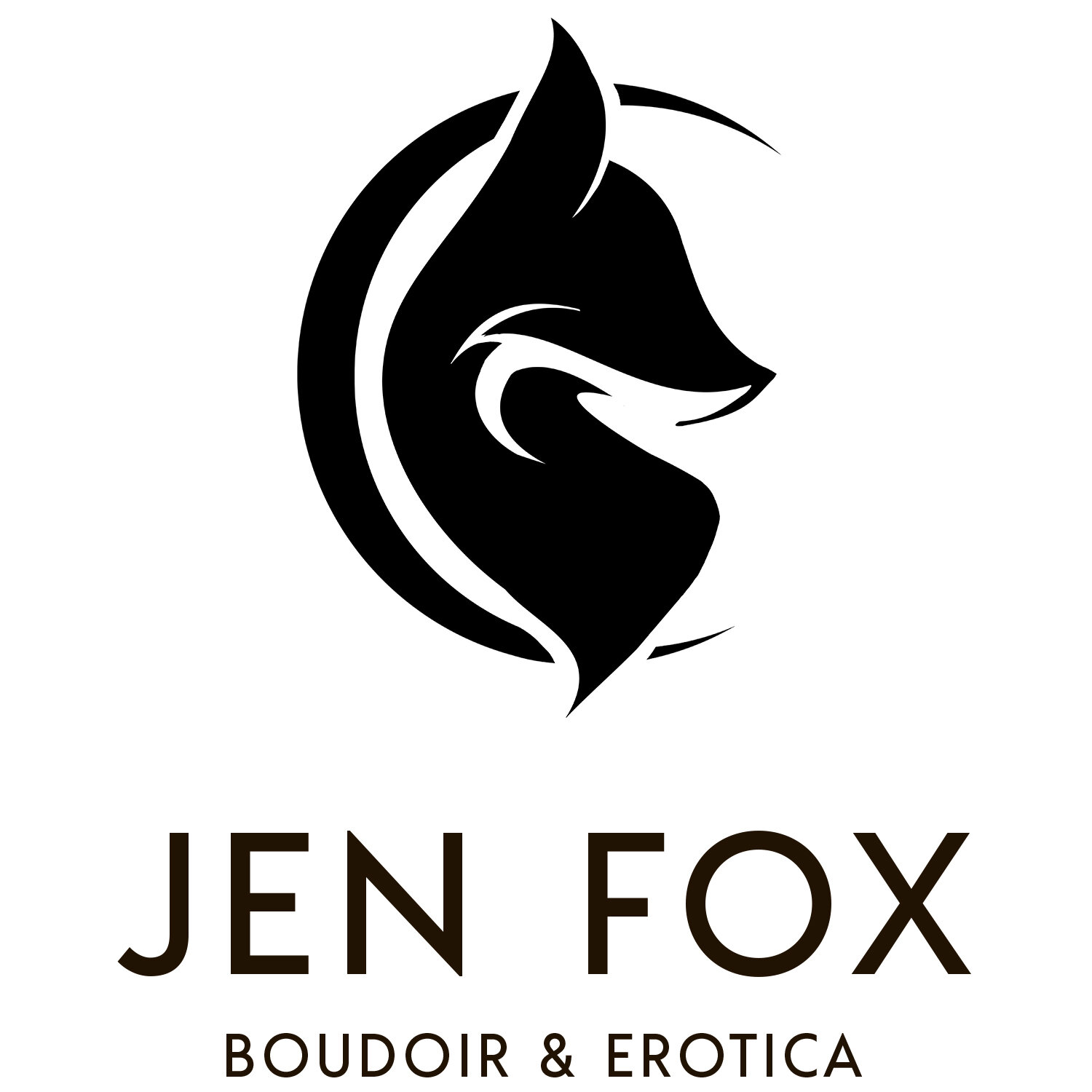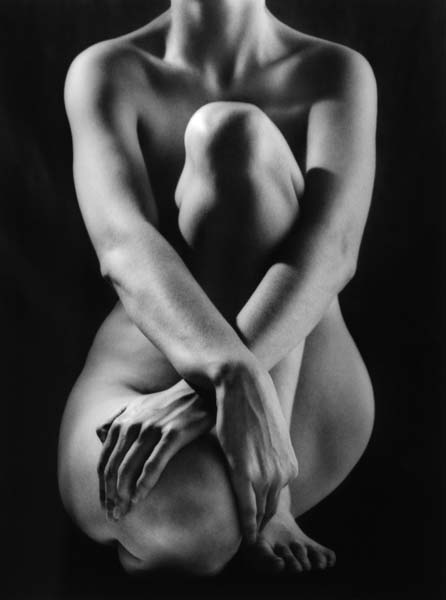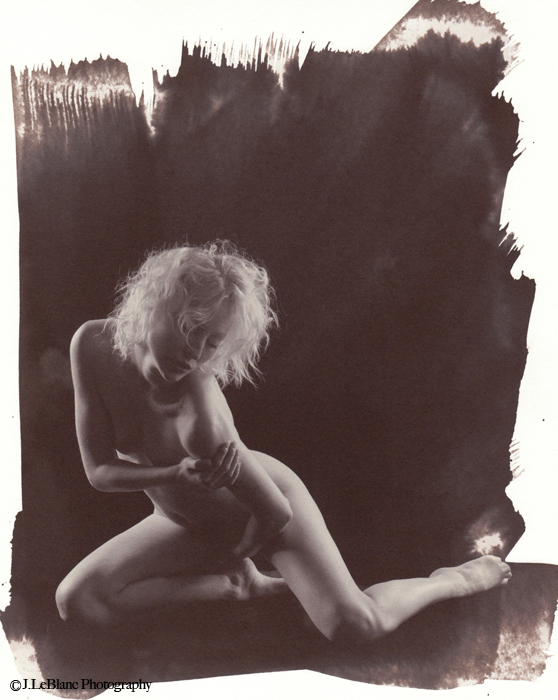Discovering Femininity | Artist Statement | Salt Prints
Discovering Femininity - Artist Statement
Discovering Femininity focuses on the beauty of the female figure. It is important that women see the beauty in themselves no matter their body type, young, old, big, or thin. The definition of beauty has been deformed over years by advertisements that depict stick thin models with pounds of makeup on, and exorbitant amounts of retouching done to every inch of their body. My goal, through photography, is to show that women do not have to look that way to be beautiful. Beauty comes in many forms.
Discovering Femininity marries old notions of beauty from the Renaissance era with modern photography and an antique printing method. Like many Renaissance paintings, Discovering Femininity celebrates the curves of women’s bodies. It showcases the soft, classical beauty of the female form with the addition of expressive poses. Creative lighting is used to paint the figure, using shadow as much as highlight in most cases. The lighting choice lends itself to the emotional impact of the photographs. The images are produced using a digital camera then are printed onto clear transparencies using an inkjet printer. Digital photography allows me the freedom to see the images I am creating immediately and helps me to further push my work. The transparencies serve as a negative that is used in the process with which I have chosen to display my work. Salt printing, an alternative photographic process, is my preferred method of producing images because of the handmade quality it transfers into the prints. Each photograph contains a pattern of brushstrokes that cannot be duplicated. The unique nature of the prints relate to the unique nature of every human being. No two of us are exactly alike. The handmade qualities resemble the amount of love and care put into each piece and the connection I make with each of my subjects.
The salt printing process was developed by British inventor Henry Fox Talbot, often known as the “Father of Photography”, while on his honeymoon around 1833 and was the first method of printing positive images on paper. It was the main method for printing photographs until the introduction to albumen prints in 1850. The process calls for coating a paper with a salt-water mixture then coating the same paper with a light sensitive silver nitrate mixture. The dry coated paper is then placed in a contact-printing frame with a negative and exposed using the sun. The prints display brown tones that, along with visible brushstrokes, are signatures of the process.
Another aspect of salt printing that attracted me is the timeless nature it gives to my photographs. In my nude work, I focus on bringing out a classic beauty in my subjects. Since salt printing is a process that was used in the early 19th century, it has the same timeless qualities that I appreciate. When combined with my nude photographs, the salt prints take on a feeling of nostalgic beauty and can be viewed without modern interference and harshness that is present in most digital prints.
In a world where everything has become about instant gratification (i.e. instant coffee, popcorn, 5 minute oil changes, fast food, etc.), digital photography has dominated the medium. Darkroom processes, even when paired with digital photography, take hours to create a single image, making each image created even more valuable.
By using a historical process, I feel I am keeping the art of handmade photographs alive. It is important to me to explore photography through all means; and that includes the processes that photographers used at the birth of the art. I learned the salt printing process to understand the history of photography itself, and to further my appreciation for the medium. It also teaches me what it was like to be a master photographer in those days. Through discovering old ways of printing, I feel a deeper connection, and appreciate spending time in the darkroom with each and every print I produce. By coupling the classical process with modern day digital photography, I am benefiting from the convenience and freedom that digital photography has to offer, while remaining true to a classical art form.
Ruth Bernhard was the biggest inspiration in the beginning of my figure series. Bernhard’s goal was to “isolate and give emphasis to form with the greatest clarity.” She focused on the effects of light on the figure and strove to show the figure in its purest form. My aim was to achieve a lighting style similar to Bernhard’s, as I am attracted to the way her figures’ skin seems to glow. Just as in Bernhard’s work, lighting is very important in my work, as it is used to accent a subject’s natural beauty. Bernhard’s figures showcase a classical and timeless aesthetic that I appreciate and also demonstrate in my work.
With the inspiration of Ruth Bernhard influencing my perspective, I felt my work needed more emotional impact and passion. My previous photographic endeavors have always focused evoking emotion. Photographer Scott Nichol is someone who I admire greatly in this aspect. Nichol is a Pennsylvania based photographer who has outstanding fine art nudes. He concerns himself with societies’ tendency to find it “more acceptable to portray visions of violence, pain, and suffering than it is to show the beauty of the human form”. I too, find it absurd that the female figure has been reduced to a sex object and is seen as offensive when nude.
Discovering Femininity focuses on emotionally expressive forms. The emotions displayed in my work range from dark to sensual, and are emotions that I am feeling at the time, or have felt at some point in my life. The darker emotions come from past experiences of feeling vulnerable, worthless, and self-conscious. These images resemble my beginning nude work where I expressed traumatic experiences of the past through self-portraits.
The images that are more sexual in nature represent the acceptance I have learned to have for my own body and self. A sexual being within myself has awakened over the years and throughout this project. The more comfortable I become with myself, the more I am able to feel free in my own body.
Since the feelings I am portraying through my photographs are my own, the faces of the subjects are generally, though not always, kept anonymous. Even though I am expressing myself through my subjects, it cannot be done without the help of my models. I select women who I feel can represent the emotions I am seeking to portray. One of the things I look for in other women is their comfort level in their own skin. In order to produce work that expresses freedom of the spirit, one cannot be inhibited by their nudity. If a woman is overly self-conscious, the tension shows through the photographs. Another quality I often look for is a comfort with their sexuality and intimacy within themselves.
Working in this vein has allowed me to rediscover myself through my work. I have come to love my own body and accept the way it is. This is a feeling I strive to instill in women everywhere and of every age. As women, we long to resemble the models we see in photographs and on television. We set ourselves up for failure by attempting to meet impossible standards created by a virtual world. We are never thin enough, shapely enough, have large enough breasts, or small enough thighs, to please ourselves. We are our biggest critics. It is not until we learn to love ourselves and feel comfortable in our own skin that we will appreciate who we are, as we are. I am not only looking to redefine beauty, but to reaffirm that we are beautiful.






